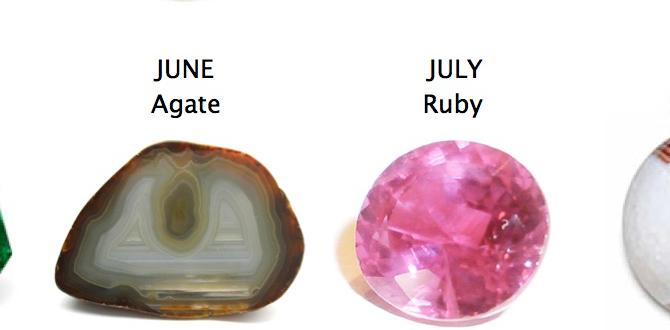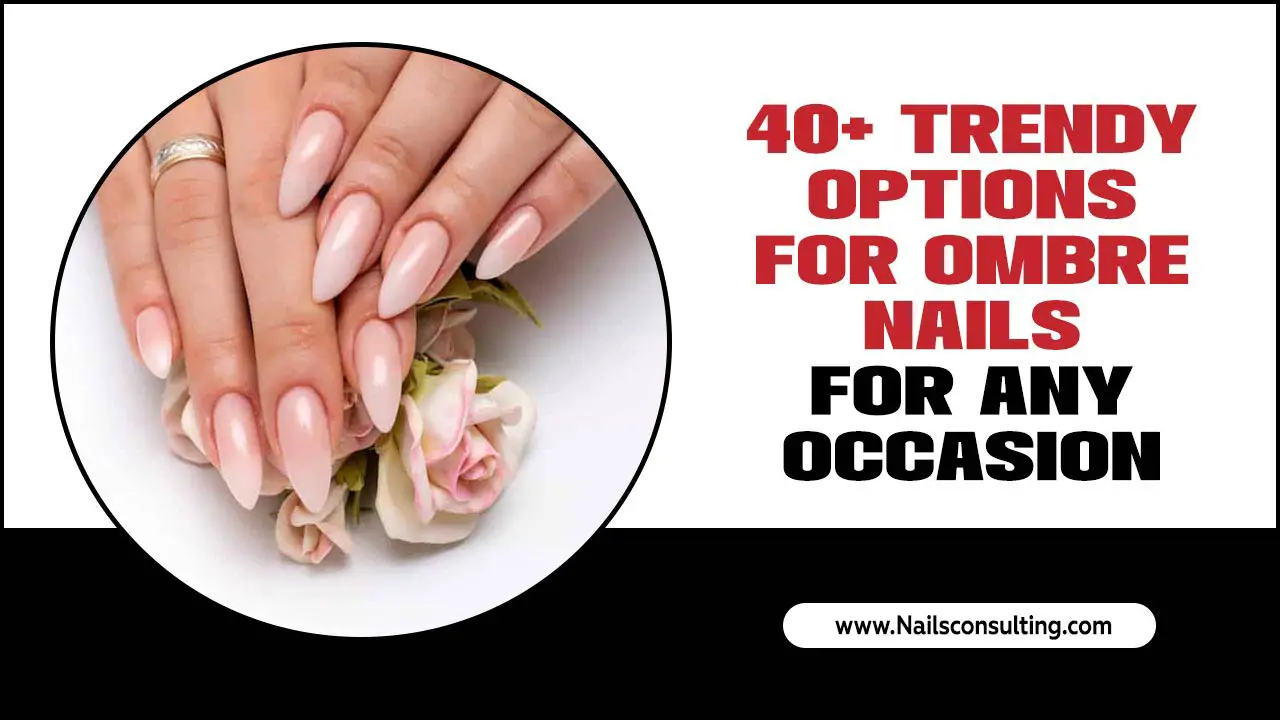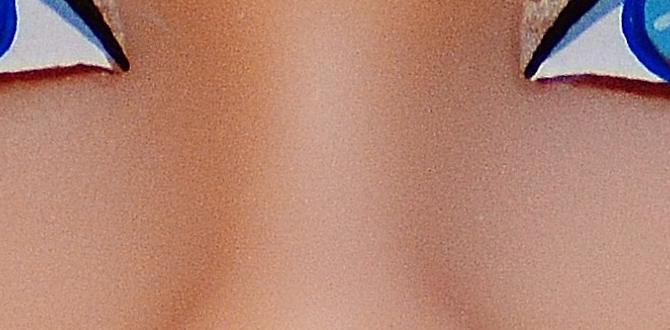Quick Summary: Discover exciting 3D printed nail art ideas for stunning, customized looks! Learn how to create unique 3D designs, from intricate florals to geometric shapes, using easy-to-follow methods. Elevate your manicure game with these proven, beginner-friendly techniques for truly stand-out nails.
Hey nail lovers! Lisa here from Nailerguy, ready to dive into a trend that’s making serious waves: 3D printed nail art. Ever look at those incredibly intricate designs on social media and think, “How do they even DO that?” You’re not alone! For a long time, super detailed, dimensional nail art seemed like it was reserved for pro salons with specialized equipment. But guess what? With some creative thinking and accessible tools, you can achieve amazing 3D effects right at home. It’s all about bringing your nail art to life, adding a wow factor that goes beyond flat polish. Ready to explore some seriously cool and surprisingly achievable 3D printed nail art ideas? Let’s get those fingertips looking spectacular!
What is 3D Printed Nail Art?
So, what exactly do we mean by “3D printed nail art”? It’s not quite like the 3D printing you might see in engineering or manufacturing, but the concept is similar: creating designs with depth and dimension. Instead of just painting a design flat onto your nail, 3D nail art involves adding elements that “pop out,” giving your manicure a sculpture-like quality. Think tiny raised flowers, intricate lattice work, chunky gems, or even miniature characters. These additions aren’t just glued on; they’re often built up using specific materials like acrylic, gel, or even specially formulated, 3D-printable resins or pastes. The result is a manicure that’s not just visually striking but also has a tangible texture. It’s an incredible way to express your personal style and push the boundaries of traditional nail design.
Why Try 3D Printed Nail Art?
You might be wondering why you’d want to venture into this exciting world of dimensional nails. Well, the reasons are as varied and vibrant as the designs themselves!
- Unleash Your Creativity: 3D nail art opens up a whole new dimension (pun intended!) for your artistic expression. You’re no longer limited to 2D canvases.
- Stand Out from the Crowd: Forget basic manicures. With 3D elements, your nails become miniature works of art that are sure to turn heads and spark conversations.
- Personalized Perfection: Whether you have a specific theme, a favorite character, or an abstract vision, 3D techniques allow for incredible customization.
- Trendy and Unique: This is a cutting-edge trend that’s constantly evolving, offering endless possibilities to stay ahead of the beauty curve.
- Achievable with Practice: While it looks complex, many 3D techniques are surprisingly accessible for beginners with the right guidance and tools.
Getting Started: Essential Tools & Materials
Before we jump into specific design ideas, let’s talk about what you’ll need to start creating your own 3D masterpieces. Don’t worry, you don’t need a high-tech 3D printer for your nails! The term “3D printed” in this context refers to the result – a design with depth created using various sculpting and building techniques.
Building Materials
These are the core components that give your nail art its form and dimension:
- UV/LED Gel: This is a fantastic medium for beginners. Gel polish can be used to sculpt intricate designs or create raised embellishments. You’ll need a UV or LED lamp to cure (harden) the gel. Brands like OPI, CND, and Gelish offer a wide range of colors and builder gels perfect for this.
- Acrylic Powder & Liquid Monomer: The classic nail sculpting material. Acrylic is versatile and can create strong, durable 3D elements. It dries hard on its own.
- 3D Nail Art Gels/Pastes: Many brands now offer specialized gels or pastes designed specifically for creating raised designs. These are often thicker and easier to control for building dimension.
- Polymer Clay (Pre-made Pieces): For simpler, faster 3D effects, you can use tiny, pre-made polymer clay shapes like fruits, flowers, or sweets. These are then sealed with top coat.
- Rhinestones, Studs, Glitter, and Charms: While not “printed,” these are essential embellishments that add texture and dimension.
Application Tools
The right tools make all the difference in sculpting and applying your 3D elements:
- Detail Brushes: You’ll need a variety of fine-tipped brushes for precise application and sculpting. Look for brushes with synthetic bristles that hold their shape well.
- Dotting Tools: These are great for placing small dots of gel or acrylic, which can be built up into larger shapes or used as a base for further sculpting.
- Tweezers: Essential for picking up and placing small charms, caviar beads, or pre-made pieces.
- Nail Art Palette or Tile: A smooth surface to mix gel colors or place drops of acrylic liquid and powder.
- Cuticle Pusher/Orange Wood Stick: Useful for manipulating materials and cleaning up edges.
- Nail Lamp (UV/LED): Crucial if you are using gel-based materials. Make sure it’s compatible with your gel products.
For a deeper dive into essential nail art tools for beginners, you might find resources like the Nailpro magazine archives helpful for understanding tool functionalities and brands.
Proven 3D Printed Nail Art Ideas for Beginners
Ready to get inspired? Here are some popular and achievable 3D nail art ideas that are perfect for trying out your new skills. We’ll break them down so you can easily visualize how they’re made.
1. Sculpted Gel Flowers
Floral designs are timeless, and adding a 3D element takes them to a whole new level of elegance. This is a great way to practice sculpting with gel.
How It’s Done:
- Prepare Your Base: Apply your base coat, color polish, and top coat as usual, but don’t cure the top coat yet if you’re sculpting directly on the nail. Alternatively, you can sculpt on a piece of foil or a silicone mat and then transfer the design. For this guide, let’s assume you’re sculpting directly on a cured color coat.
- Start with the Center: Pick up a small bead of builder gel with your detail brush. Place it on the nail where you want the center of your flower. Use your brush to gently shape it into a small mound. Cure under your UV/LED lamp.
- Add Petals: Take slightly larger beads of gel. Place them around the center, carefully shaping each one into a petal. You can make them rounded, pointed, or even slightly curled. Work your way around the center piece. Cure after each few petals, or once you have a few sections done, to prevent the gel from spreading too much.
- Build Layers: For more depth, add another layer of petals overlapping the first. You can use a slightly different gel color for contrast. Cure thoroughly.
- Finishing Touches: Add tiny dots of gel for pistils or use a fine brush to draw subtle veins on the petals. A tiny gemstone can also be added to the center.
- Seal the Deal: Once you’re happy with your sculpted flower, apply a thin layer of top coat around the design, being careful not to flood the details. Cure and you’re done!
Nailerguy Tip:
Practice sculpting on a flat surface like a silicone mat first! This helps you get a feel for the gel consistency and how it moves without the pressure of doing it directly on your nail. You can then carefully lift and place your cured 3D elements onto your polished nail.
2. Raised Geometric Patterns
Modern, chic, and surprisingly easy to achieve, geometric patterns can add a sophisticated edge. This is perfect for clean lines and sharp details.
How It’s Done:
- Base and Outline: Apply your base color and cure. Then, using a fine-liner gel polish or acrylic, draw the basic geometric outline (e.g., a square, triangle, or intersecting lines) on the nail. Cure if using gel.
- Build the Dimension: Use a thicker builder gel or a 3D sculpting gel. With a small detail brush or a dotting tool, carefully trace over your drawn lines, building them up into raised ridges. You can create solid shapes by filling in the areas between lines with gel.
- Layering and Depth: For a more complex look, you can layer shapes or create overlapping elements. For instance, draw a diamond shape, then build up its outline, and then add smaller raised dots inside it.
- Adding Embellishments: Small rhinestones or tiny metal studs can be strategically placed within or at the corners of your geometric shapes for extra sparkle.
- Cure and Finish: Cure the gel thoroughly. Apply a final layer of top coat, taking care to define the edges of your 3D shapes.
Nailerguy Tip:
Don’t be afraid to mix and match materials! You can use gel for the main sculpted structure and then add tiny metal studs or glitter that are embedded into the uncured gel before curing for a mixed-media effect.
3. Miniature Charms and Embellishments
This is perhaps the most beginner-friendly way to achieve 3D nail art. It involves attaching pre-made charms or creating small sculpted elements that are then applied.
How It’s Done:
- Prepare Your Nails: Apply your base color and top coat (cure it).
- Choose Your Charms: Select a variety of small charms – think tiny fruits, bows, hearts, or even miniature rhinestones. You can find these at craft stores or online beauty supply shops.
- Adhere with Gel or Glue:
- Using Gel: Apply a small bead of builder gel or a thicker gel adhesive onto the desired spot on your nail. Gently press the charm into the gel using tweezers. Place the nail under your UV/LED lamp to cure the gel, securing the charm.
- Using Nail Glue: Apply a tiny drop of strong nail glue to the back of the charm and press it firmly onto the nail for about 30 seconds until it holds.
- Seal and Protect: Once the charm is securely attached, apply a thin layer of top coat around the base of the charm, being careful not to cover its detailed surface. If using gel, cure it. If using nail glue, allow it to dry completely. For added durability, especially with sculpted elements, you can carefully encapsulate the entire nail with a thin layer of clear builder gel, avoiding the charm’s surface if you want it to retain its shine.
Nailerguy Tip:
Before you commit, play around with charm placement! Lay them out on a clean surface to decide on the best arrangement and balance before you start gluing or gelling them down.
Advanced Techniques (For When You’re Ready!)
Once you’ve mastered the basics, you might be ready to explore more intricate techniques. These require a bit more practice but yield incredibly impressive results.
- Acrylic 3D Flowers: Similar to gel flowers, but using acrylic. This allows for faster creation in some cases as it dries on its own. You’ll use a brush to pick up a bead of acrylic (made from powder and liquid monomer) and sculpt it into petals and leaves.
- Sugar Art/Cone Flowers: These delicate flowers are created by sculpting a tiny ball of acrylic or gel and then “pulling” it into a petal shape using a brush. They are often used in clusters to create a bouquet effect.
- Lace Work: Using very fine gel or acrylic, you can paint and sculpt intricate lace-like patterns that appear to hover over the nail. This requires a very steady hand and precise application.
- Sculpted Characters/Objects: For the truly ambitious, this involves sculpting miniature figures, animals, or objects. It’s a highly advanced skill that often requires specialized brushes and extensive practice.
Table: Pros and Cons of Building Materials
Choosing the right material is key to your 3D nail art success. Here’s a quick look at the advantages and disadvantages of common sculpting mediums.
| Material | Pros | Cons |
|---|---|---|
| UV/LED Gel | Beginner-friendly, self-leveling, no odor, clear/colored options, requires lamp to cure. | Requires UV/LED lamp, can be sticky/messy if too much is used, might not be as durable as acrylic for very high elements. |
| Acrylic Powder & Liquid | Very durable, sculpts well, no lamp required, fast drying once mixed. | Strong odor, can be tricky to control consistency for beginners, dries very quickly requiring speed, can be less forgiving of mistakes. |
| 3D Gels/Pastes | Specifically designed for sculpting, often thicker and easier to control, good for intricate details. | Can be more expensive, limited color palettes compared to standard gels. |
| Pre-made Charms/Clay Slices | Extremely easy and fast, no sculpting skill needed, wide variety available. | Less customization, can fall off if not applied securely, might add bulk. |
Maintaining Your 3D Nail Art
Once you’ve invested time and skill into your stunning 3D creations, you’ll want them to last! Proper care is essential.
- Be Gentle: Your 3D elements, while often strong, are still dimensional. Avoid using your nails to pry open things or perform heavy-duty manual tasks.
- Moisturize: Keep your cuticles and the skin around your nails hydrated with cuticle oil. This helps prevent hangnails and keeps your natural nail bed healthy, which in turn supports your art.
- Top Coat Touch-ups: If a tiny edge of a sculpted element starts to lift, or if a charming loses a bit of its shine, you can carefully apply a tiny amount of top coat to that specific spot (and cure if it’s gel) to reinforce it.
- Avoid Harsh Chemicals: Prolonged exposure to harsh cleaning chemicals can potentially degrade the nail products. Wear gloves when doing chores!
For more on nail health that supports your art, check out guidelines from organizations like the U.S. Food and Drug Administration (FDA) regarding cosmetic safety and care.
FAQ: Your 3D Nail Art Questions Answered
Q1: Is 3D nail art difficult for beginners?
A: Some 3D techniques, like applying pre-made charms or using thicker 3D gels, are very beginner-friendly. Sculpting intricate flowers or detailed patterns with acrylic or gel takes practice, but you can certainly learn with patience and the right tools!
Q2: Do I need a 3D printer for 3D nail art?
A: No! The term “3D printed nail art” refers to the result of creating designs with depth and dimension using sculpting mediums like gel or acrylic, not actual 3D printing technology.
Q3: How long does 3D nail art last?
A: When applied correctly with durable materials like builder gel or acrylic, and properly cared for, 3D nail art can last as long as a regular gel or acrylic manicure, typically 2-3 weeks.
Q4: Can 3D nail art be harmful to my natural nails?
A: Like any artificial nail enhancement, if applied and removed improperly, it can cause damage. However, when done correctly by a trained professional or a careful DIYer, and with regular nail care, it is generally safe. Always ensure you’re using good quality products designed for nails.
Q5: What’s the difference between 3D gel and regular gel polish?
A: Regular gel polish is thin and used for color and basic designs. 3D gel (or builder gel) is much thicker and has a viscosity that allows it to be sculpted and built up to create texture and dimension without running off the nail.
Q6: How do I avoid making my 3D nails too bulky?
A: The key is moderation and strategic placement. Start with small amounts of sculpting material. Focus on building height gradually. Not every nail needs a massive 3D element; often, one or two accent nails are enough to make a statement without feeling cumbersome.
Conclusion
There you have it! Exploring the world of 3D printed nail



